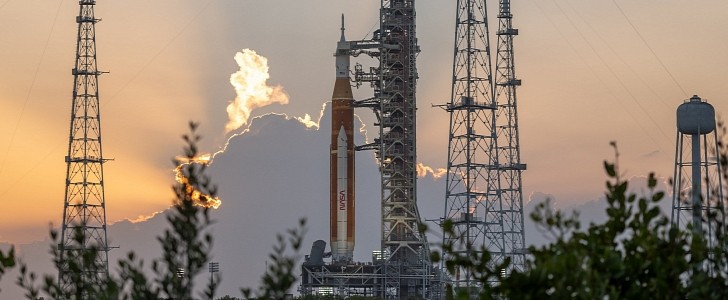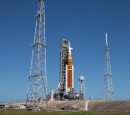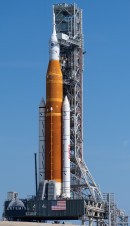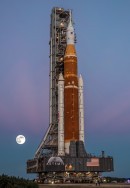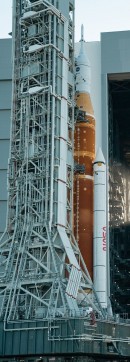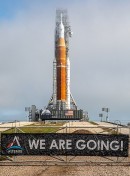NASA's first uncrewed flight of its Space Launch System (SLS) rocket and Orion spacecraft was supposed to take place today, September 3. However, due to a liquid hydrogen leak detected by engineers, the launch was postponed. This is the second launch attempt scrubbed by the agency this week.
The Artemis I is the first mission out of a series meant to return humanity to the Moon. On Monday, August 29, the rocket was supposed to blast off from NASA's Kennedy Space Center and give Orion the big push it needed to go further than any human-rated spacecraft has ever traveled.
But the first launch attempt was scrubbed. The countdown clock stopped at T-40 minutes due to an issue encountered with one of the rocket's engines during the core stage's bleed phase. This time, the much-anticipated launch was scrubbed before teams even got to that part.
The massive SLS was scheduled for liftoff at 2:17 p.m. EDT, but the launch director waived off the attempt hours before it took place due to a hydrogen leak encountered during tanking operations. While fuelling the rocket's core stage, "a leak developed in the supply side of the 8-inch quick disconnect."
The same problem threatened the first launch attempt as well, but NASA stated that the leak was "acceptable" and resumed launch activities. This time, however, the issue could not be resolved. After the third troubleshooting effort, the liquid hydrogen leak occurred again when engineers attempted to fuel the core stage.
If NASA can fix the hydrogen leak, the next possible launch dates for the Artemis 1 mission are September 5 and September 6. However, the agency has yet to announce if it will make another attempt on one of those days.
This goes to show that this is an extremely complex machine that has to function properly before it blasts off into space. So until every component is not working how it is supposed to, the rocket won't leave the launch pad. It's important to remember that it took Space Shuttle Discovery four launch attempts before it left our skies. But when it roared into space, it began a successful career that lasted 27 years.
But the first launch attempt was scrubbed. The countdown clock stopped at T-40 minutes due to an issue encountered with one of the rocket's engines during the core stage's bleed phase. This time, the much-anticipated launch was scrubbed before teams even got to that part.
The massive SLS was scheduled for liftoff at 2:17 p.m. EDT, but the launch director waived off the attempt hours before it took place due to a hydrogen leak encountered during tanking operations. While fuelling the rocket's core stage, "a leak developed in the supply side of the 8-inch quick disconnect."
The same problem threatened the first launch attempt as well, but NASA stated that the leak was "acceptable" and resumed launch activities. This time, however, the issue could not be resolved. After the third troubleshooting effort, the liquid hydrogen leak occurred again when engineers attempted to fuel the core stage.
If NASA can fix the hydrogen leak, the next possible launch dates for the Artemis 1 mission are September 5 and September 6. However, the agency has yet to announce if it will make another attempt on one of those days.
This goes to show that this is an extremely complex machine that has to function properly before it blasts off into space. So until every component is not working how it is supposed to, the rocket won't leave the launch pad. It's important to remember that it took Space Shuttle Discovery four launch attempts before it left our skies. But when it roared into space, it began a successful career that lasted 27 years.
The #Artemis I mission to the Moon has been postponed. Teams attempted to fix an issue related to a leak in the hardware transferring fuel into the rocket, but were unsuccessful. Join NASA leaders later today for a news conference. Check for updates: https://t.co/6LVDrA1toy pic.twitter.com/LgXnjCy40u
— NASA (@NASA) September 3, 2022
